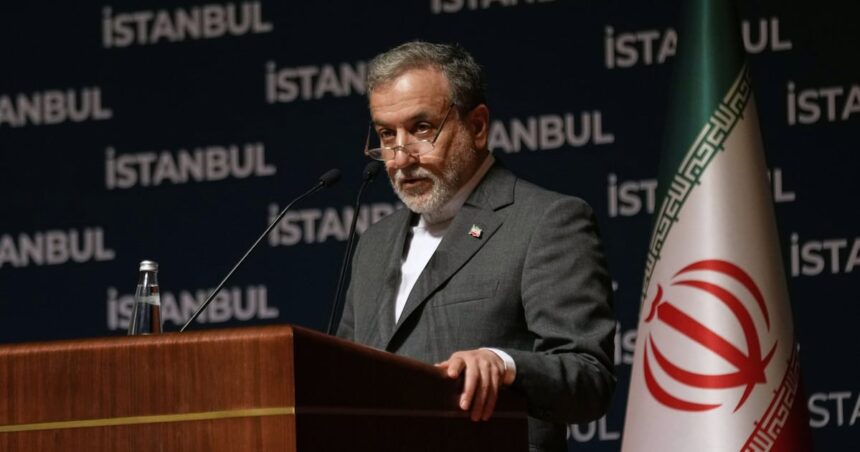I’ve stood on the scorched edges of too many conflict zones to believe war ever stays contained. Yet here we are again, watching as U.S. military strikes against Iranian nuclear facilities threaten to unravel decades of fragile regional stability in ways that could reshape global power dynamics for generations.
The predawn bombardment of three Iranian nuclear sites yesterday represents the most significant direct military confrontation between Washington and Tehran since the 1979 Islamic Revolution. Pentagon officials confirmed that precision-guided munitions struck facilities at Natanz, Fordow, and Isfahan—targeting Iran’s uranium enrichment capabilities while allegedly avoiding civilian infrastructure.
“These strikes were calibrated to degrade Iran’s nuclear program while minimizing the risk of escalation,” explained Defense Secretary Kelley Wright during an emergency press briefing. “We exhausted all diplomatic options before taking this extraordinary step.”
But standing in the marble hallways of the UN Security Council last night, I watched as furious diplomats from Russia and China condemned the strikes as “acts of war” and “violations of international law.” The Iranian ambassador, his voice tight with controlled rage, promised a “proportional response that will make America regret its aggression.”
Families in Tehran are stockpiling food and medicine. Oil prices surged 18% overnight. And military analysts warn we’ve entered dangerous uncharted territory.
Having covered Middle East politics for nearly two decades, I’ve rarely seen regional tensions this combustible. The strikes follow months of deteriorating relations after satellite imagery revealed Iran had accelerated uranium enrichment to near-weapons grade levels at underground facilities.
“The intelligence was unambiguous,” a senior State Department official told me on condition of anonymity. “Iran crossed red lines we clearly communicated through diplomatic channels. They were weeks, not months, from nuclear weapons capability.”
Iranian officials vehemently deny these claims, insisting their program remains peaceful. Independent verification has proven impossible since Iran restricted IAEA inspector access last year—a move that itself followed the previous administration’s withdrawal from the JCPOA nuclear deal.
On the streets of Brussels, where NATO ambassadors convened an emergency session this morning, European allies expressed frustration at being marginally consulted before the strikes. “This puts us in an impossible position,” a French diplomatic source confided. “We cannot condone unilateral military action, but we also cannot accept a nuclear-armed Iran.”
The human stakes extend far beyond geopolitics. Speaking by encrypted video link, Soraya Ahmadi, an Iranian civil society activist in Tehran, described the mood: “People are terrified. The economy was already collapsing under sanctions. Now we fear being caught between our government’s nuclear ambitions and American bombs.”
Military analysts at the Institute for Strategic Studies estimate the strikes have set back Iran’s nuclear program by 2-3 years—not eliminated it. “This buys time but solves nothing,” explains Dr. Farhad Rezaei, senior fellow at the Center for Iranian Studies. “In fact, it will likely accelerate Iran’s determination to acquire nuclear deterrence capabilities.”
The regional ripple effects are already visible. Israel has moved to high alert, activating missile defense systems and mobilizing reservists. Saudi Arabia and the UAE have publicly called for restraint while privately expressing support for the American action through diplomatic channels. The Strait of Hormuz—through which 20% of global oil supplies travel—is now flanked by warships from multiple nations.
Economic implications extend globally. Beyond soaring oil prices, international shipping companies have announced rerouting vessels away from the Persian Gulf, with Lloyd’s of London imposing war-risk premiums on vessels transiting anywhere within 500 nautical miles of Iranian territory.
What makes this crisis particularly volatile is the constellation of proxy forces Iran has cultivated across the region. Intelligence sources warn of potential retaliatory strikes against U.S. bases in Iraq, Syria, and the Gulf states. Hezbollah in Lebanon possesses an estimated 150,000 rockets capable of reaching Israel. Houthi rebels in Yemen have demonstrated increasing sophistication in drone and missile technology.
“This isn’t just about Iran,” explains former Ambassador Elizabeth Thornton, now at the Council on Foreign Relations. “It’s about an entire ecosystem of allied militias and proxy forces that could ignite multiple conflicts simultaneously.”
Congressional reaction has split along partisan lines, with Republican leaders praising the strikes as “necessary and overdue” while Democratic leaders question both the legal authorization and strategic wisdom. A special session of Congress has been called for tomorrow.
UN Secretary-General Miguel Santos has called for an immediate return to dialogue, offering to personally mediate talks. But with Iranian Supreme Leader Khamenei publicly rejecting negotiations “at gunpoint” and U.S. officials insisting the military option remains on the table for further strikes, diplomatic pathways appear narrow.
Standing yesterday at the Turkish-Iranian border, where frightened families have already begun crossing into neighboring countries, I was reminded how quickly geopolitical chess moves translate into human suffering. An elderly man carrying a single suitcase told me simply: “The powerful play their games, and we pay the price.”
As we wait to see Iran’s response, one thing is certain—the decades-long shadow war between these adversaries has stepped into the daylight, with unpredictable consequences for global security, energy markets, and millions of civilians caught in the crossfire.






